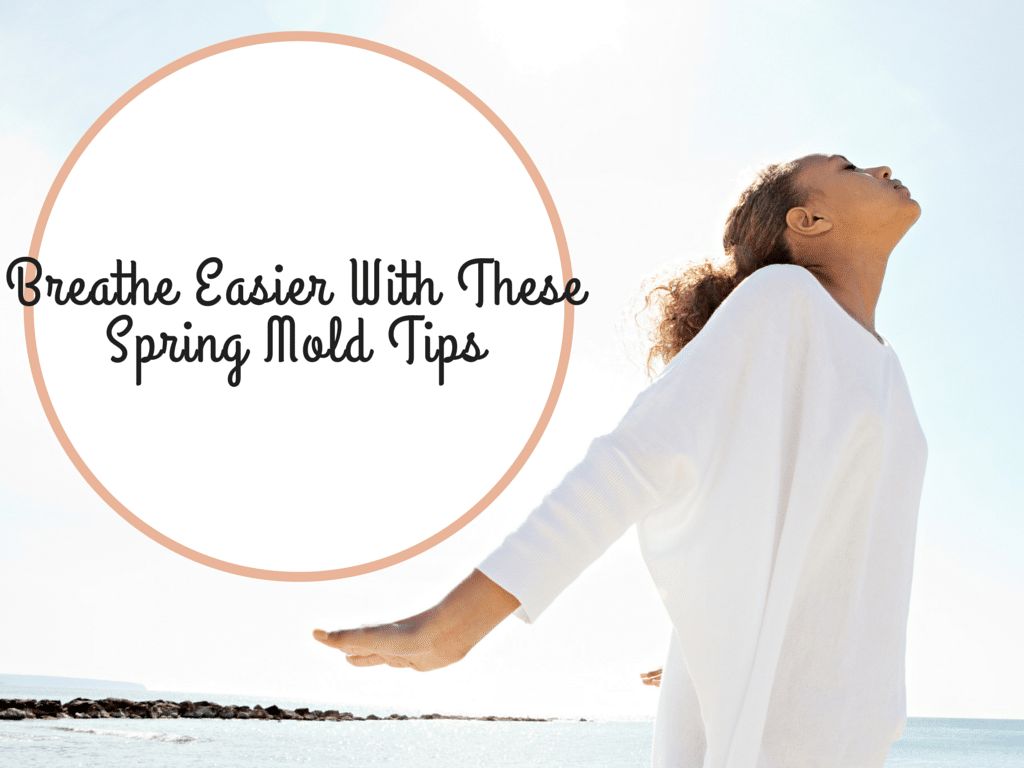
Molds are miniature, invasive fungi that take root in your home and breed in damp places like bathrooms and poorly ventilated rooms. Each spring when the days get longer and the weather heats up spring mold issues arrive.
Mold is Dangerous for Everyone
Mold isn’t something you can ignore. Disturbing mold spores and releasing them into the air causes allergic reactions for anyone who has a mold allergy, but it doesn’t take a severe allergy for mold to create discomfort.
Watery eyes, a runny nose, and annoying itching accompany mold allergies, and anyone with a severe allergy might experience a dangerous asthmatic reaction. Mold can even generate an uncomfortable histamine reaction in people who don’t have a serious allergy.
This means it may feel like you’re getting a cold when mold starts growing in your home. Spring mold issues are no way to greet the warmer weather.
Making it Difficult for Mold
One of the reasons why mold arrives with the spring is the wet environment from disappearing snow and springtime rain. Late-winter storms that quickly dump several inches of rain on a home may allow mold to grow swiftly, especially when temperatures sit above the freezing point.
However, there are several ways to reduce the likelihood of mold growth in the home. The Environmental Protection Agency suggests these helpful spring cleaning tips for keeping your indoor space mold-free:
- Clear out roof gutters
- Make sure air conditioners aren’t full of water
- Take care of plumbing problems and leaks
- Keep humidity below 60 percent
You can keep an eye on the humidity in your home with a monitor that resembles a simple temperature gauge. Places like bathrooms are prime spots for mold growth, so take note of the humidity level and look for standing water around the shower or bathtub.
Keep an Eye Out for Mold
Even if you do everything to make sure that mold doesn’t grow in your home, this tricky fungi has ways of surviving. In addition to the sudden onset of cold-like symptoms, there are other signs you can use to recognize mold’s appearance in the home.
If you notice that the walls are damp or there are water droplets hanging from the roof of an interior room, you may have a plumbing issue that needs attention. Remember that mold can take root in just 48 hours, so it’s essential that you don’t ignore plumbing issues.
Getting Rid of Mold
Keeping your home free of excessive humidity and standing water helps reduce the likelihood that you’ll have spring mold issues, but sometimes even the best efforts may fail to catch all mold growth. Perhaps growth behind the sink isn’t noticeable until it starts to appear around the visible section of the wall.
Anyone who doesn’t have an allergy to mold may choose to use detergent and water to clean a surface of mold; however, note that a small section of the wall with visible mold might represent a huge problem growing beneath the walls. If you smell a musty odor even after you wash a surface, that’s a sign that mold still lurks beneath the walls or underneath the wallpaper.
Government environmental agencies recommend immediate action be taken if anyone in the home has a vulnerable immune system due to illness, such as a cancer patient who recently underwent chemotherapy. Spring mold growth where residents are allergic or vulnerable fares best with a professional company’s inspection and abatement.
Keep your home safe this spring by removing excess moisture from the home, inspecting damp areas, and getting rid of mold before it can grow into a dangerous problem.
Worried About Lack Proper Attic Ventilation Leading to Attic Mold?
We can help! Whether you need a high quality cleaning service for your home or business, or an experienced certified crew to handle an emergency water damage restoration. We will always give you 100% attention and the very best service possible.
